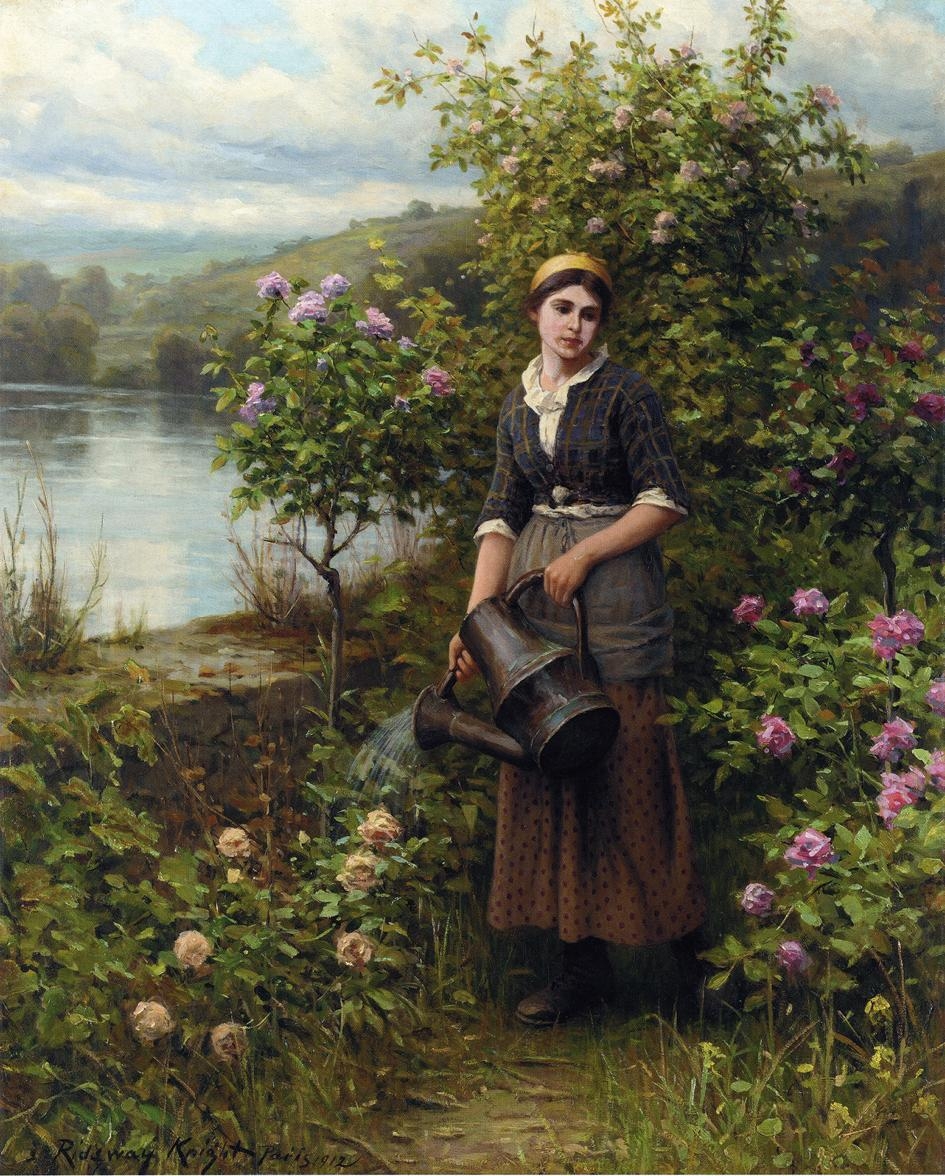Summer is in full swing now and you may be torn between reading a book on the chaise lounge or pruning the wisteria. Actually, it’s important to do both. Watering is crucial also as plants are vigorously growing and the warmer weather evaporates available soil moisture quickly.
Ignore generalities such as "provide one inch of water each week" or "don’t water at midday,the leaves will burn". Instead, become aware of your garden’s moisture needs. Hot, sunny, windy slopes or shady beds with clay soil and new plantings all require a different watering strategy.
When is the best time to water? Is it true that water droplets will scorch leaves in the sun? According to a study published in New Phytologist, a journal of research in plant science, there is a slight risk of leaf burn on fuzzy leaved plants like ferns. The hairs can hold the water droplets above the leaf surface and act as a magnifying glass to the light beaming through them. The study also reported that water droplets on smooth leaves, such as maples, cannot cause leaf burn, regardless of the time of day.
best time to water? Is it true that water droplets will scorch leaves in the sun? According to a study published in New Phytologist, a journal of research in plant science, there is a slight risk of leaf burn on fuzzy leaved plants like ferns. The hairs can hold the water droplets above the leaf surface and act as a magnifying glass to the light beaming through them. The study also reported that water droplets on smooth leaves, such as maples, cannot cause leaf burn, regardless of the time of day.
However, in my thirty years of gardening , my own observation is that the leaf burn on a fuzzy leaf must be very small, indeed, as I’ve never observed any damage. If you find a plant needs water midday, by all means go ahead and water it. Containers even benefit from the cooling effect that watering provides.
That being said, watering in the morning is the most efficient whether you water by sprinkler, drip system, soaker hose or by hand. The water soaks deep in the soil without risk of evaporation. It bolster the plant for the day and has dried from leaves by evening reducing the risk for foliar diseases like mildew. Plant roots are also more receptive to watering in the morning.
Water makes up 90-98% of every plant we grow. It’s needed for photosynthesis, as well as reproduction and defense against pests. Checking soil moisture and improving a soils ability to absorb and hold water should be a priority when you’re out in the garden. Don’t wait for plants to wilt and burn before correcting watering problems.
Most plants need 18" depth of well-drained soil to thrive although trees and many vegetables roots grow several feet deep. More than an inch of water per week may be needed for their success and in the case of many trees and native plants, deeper but more infrequent watering is required.
You can easily measure how much water you are applying. If you have a sprinkler system, place a straight-sided container like a tuna can on the outside edge of the area being watered. Let the sprinkler run until one inch of water has accumulated in the can. When using a drip system or soaker hose, irrigate until a 3" deep test hole dug 1 ft out from the emitter or end of the soaker is moist. Moisture at that level indicates than an inch of water has been applied. The best way to determine how many inches of water your soil needs for a good soak is by digging down after the water has had a chance to settle. When watered well, the soil should feel cool and damp at the bottom of the hole. If the soil feels warm and dry you haven’t watered long enough. You need to do this test just once to get a feeling for how much water your soil can hold and how deeply it’s soaking in.
Be kind to your plants this summer. It only take a few minutes for a drop of water suspended form a soil particle to be drawn upward from a root tip to the farthest leaf blade and then released from leaf stomata as air cooling vapor. How cool it that?

 They use a lot of nutrients, especially nitrogen, at this time of year. Add water soluble fertilizer to your drip irrigation system or apply it through a hose-end sprayer. Sprinkle dry fertilizers over the soil around the plants or apply in trenches next to the rows. Water deeply afterward.
They use a lot of nutrients, especially nitrogen, at this time of year. Add water soluble fertilizer to your drip irrigation system or apply it through a hose-end sprayer. Sprinkle dry fertilizers over the soil around the plants or apply in trenches next to the rows. Water deeply afterward.